Day Four
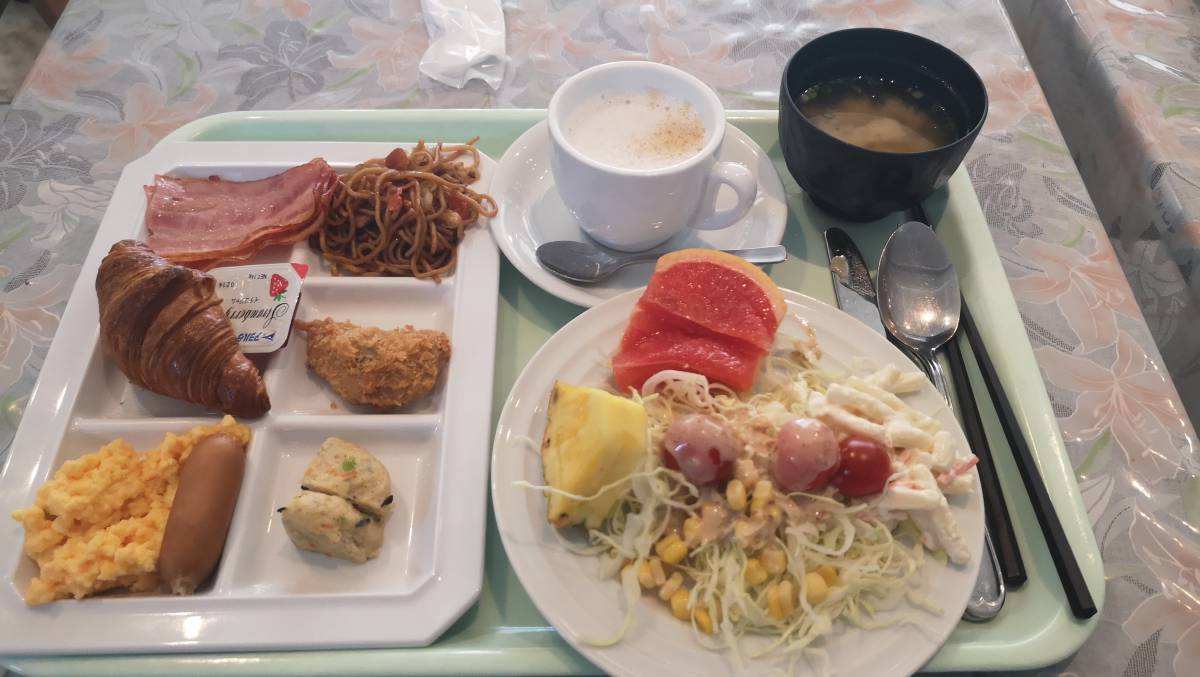
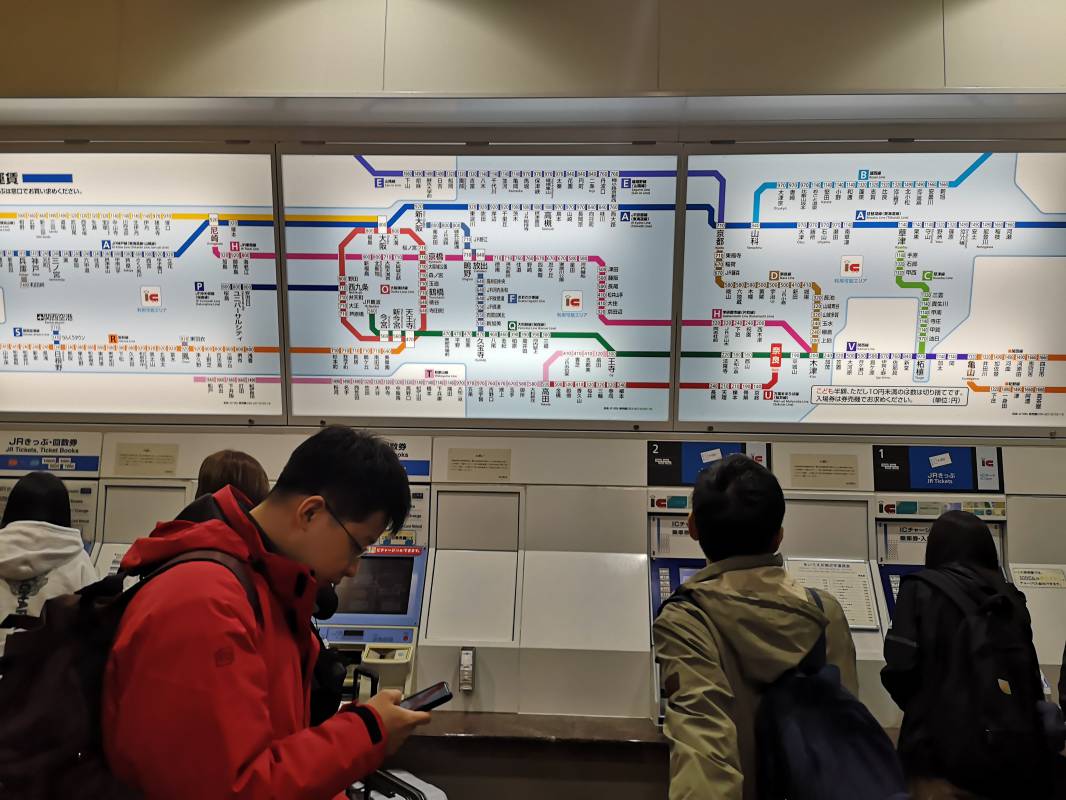
Looking at the train lines information board above the ticketing machine, it is not clear how to get to Nara. Jas inquired at the station chef and there is a train from Kyoto direct to Nara.
Destination Nara Park
In Nara, the legend goes that a god of thunder, Takemikazuchi, traveled from Ibaraki prefecture to Nara sometime in the 700s. It is said he first appeared on the top of a mountain riding on a white deer. Takemikazuchi became one of the deities enshrined at Nara’s Kasuga shrine, thus the deer inhabiting the surrounding forest were deemed messengers of the gods and decreed sacred.
It was punishable by death until the 1600s to harm one of these creatures. Even seeing a deceased deer and failing to report it was a punishable offense. To see these deer alive was considered a good omen from the gods and people would bow low to them to show honor to the sacred animals. After World War II, their holy status was lowered to the slightly less distinguished National Treasure.
Over a thousand years ago, Kujo Kanezane, a high-ranking government official, was inspecting a temple in Nara when a deer entered the hallway despite a heavy crowd. Kujo recounted joining his hands together and bowing low to the animal and being so overcome that he cried. It’s been a few centuries since Kujo visited Nara, but the sacred deer of Nara Park are still delighting visitors to this day.
While not considered divine by most today, the deer are Nara’s biggest draw for many visitors. With a population of about 1,200, the deer have free range over most of Nara Park and the surrounding mountains. Traffic jams have been known to occur simply because a deer would not be moved off the roads. Japan may have modernized, but these deer haven’t.
Today these deer may elicit many squeals of “kawaii,” there are some things to be aware of when visiting. They may be used to humans, but they are still wild animals. They head butt, kick, jump, and bite. With an insatiable appetite, they grab any loose paper they can get their mouth on. There are vendors selling senbei, or rice crackers, for visitors to feed the deer and this is one of the most popular activities in Nara. It appears that many of the deer have learned that bowing low can result in a crunchy treat or two. However, the deer can get extremely aggressive towards people trying to feed them so watch fingers and gloves. Despite some naughty behavior, Nara’s deer continue to charm thousands of people from all over the world every year.
The journey continues with the train from Nara to Osaka. It will be our last stop. It's middag when we arrive in Osakajokkoen station and we have lunch first
Next destination Osaka Castle
Osaka Castle is one of the most famous and historic castles in all of Japan. The iconic symbol of Osaka in the Kansai region of central Japan played an important role in the unification of Japan during the samurai era of the sixteenth century.
About Osaka Castle
The current main tower at Osaka Castle is a concrete reconstruction of the 17th-century castle and was completed in 1931. In its original construction back in the 16th century, it was unparalleled as the largest and best constructed castle in Japan. Today, it offers fantastic views of the city and is a popular tourist destination in spring for the beautiful cherry blossoms. The castle grounds cover approximately 60,000 square meters (15 acres) and contain thirteen structures that have been designated as important cultural assets of Japan.The History of Osaka Castle
The Toyotomi Years: 1586-1615
Osaka Castle was originally completed in 1586 as a display of power and grandeur by the samurai warlord and ruler of Japan, Toyotomi Hideyoshi after accomplishing his goal of unifying Japan. The impressive castle took only three years to complete, thanks to the hard work of around 100,000 workers.
The castle became the center of the new unified Japan under Toyotomi rule and brought with it a short period of peace after centuries of civil war. The five-story main tower featured an exterior covered in gold leaf and ornaments, designed to impress visitors and demoralize enemies. It also featured eight giant fusetora (golden tiger) decorations and golden shachi (a mythical creature with the head of a tiger and the body of a carp) roof ornaments, believed to protect the castle against fire.
Over the years Toyotomi continued to expand the castle, making it more and more formidable to attackers. In 1597, Hideyoshi died, with Osaka Castle passed on to his young son, Toyotomi Hideyori.
In 1614, Osaka Castle was attacked by Tokugawa Ieyasu, victor of the greatest samurai battle in history at Sekigahara and ruler of Japan. The Toyotomi forces were overwhelmingly outnumbered by approximately two to one, but managed to fight off the 200,000 Tokugawa-led samurai army due to the strength of the castle and the cunning skill of one of its samurai generals, Yukimura Sanada.
The Tokugawa Years: 1615-1868
The original castle was unfortunately attacked again and finally destroyed by the forces of Tokugawa Ieyasu in 1615 during the second siege of Osaka Castle. This brought about the end of the powerful Toyotomi clan and led to the undisputed power of the Tokugawa Shogunate, which would rule Japan for the next 250 years.
The castle was rebuilt again in a slightly different spot by the new heir to the shogunate, Tokugawa Hidetada in 1620s, but the main castle tower was struck by lightning in 1665 and burnt down.
In 1868, the castle was razed to the ground rather than being surrendered to the anti-shogunate forces of the Meiji Restoration in 1868.
Our journey is coming to an end. Time to head for Kansai airlport. An express train takes us from Osakajokoen Station direct to Kansai airport. From Kansai fly to Haneda airport, change terminal and continue to Manila.. We arrive early hours in Manila and go strait to bed getting some extra sleep....
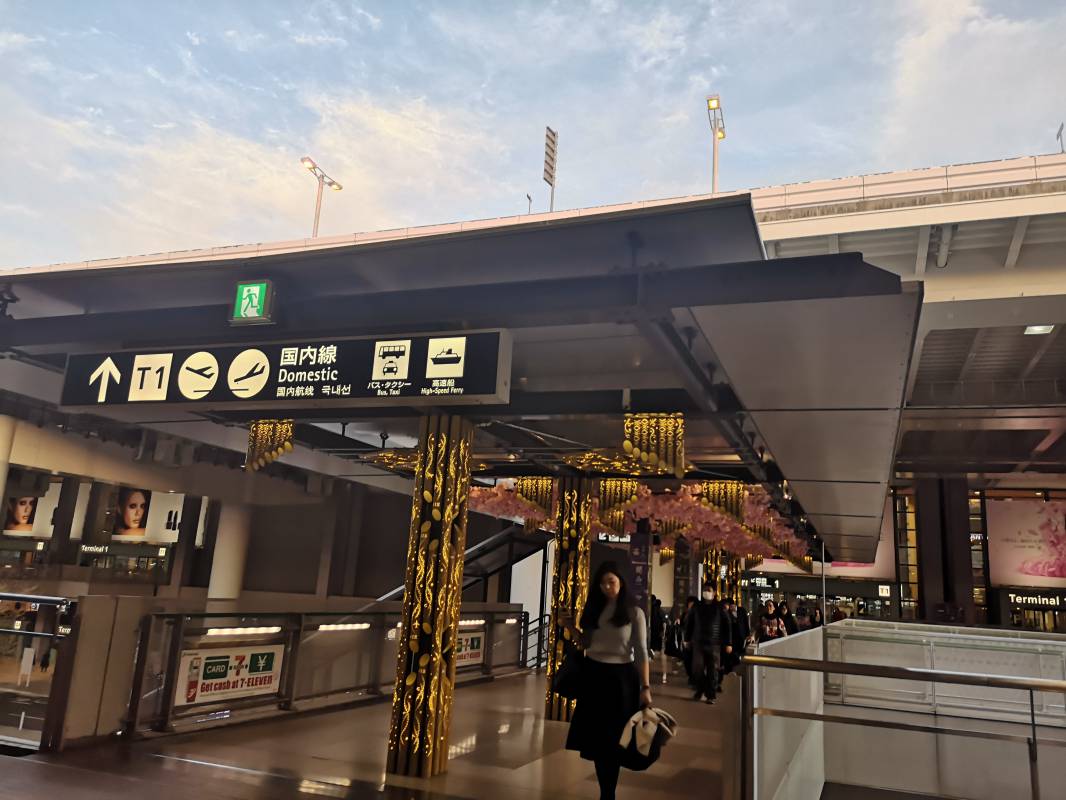 Kansai Airport departure entrance
Kansai Airport departure entrance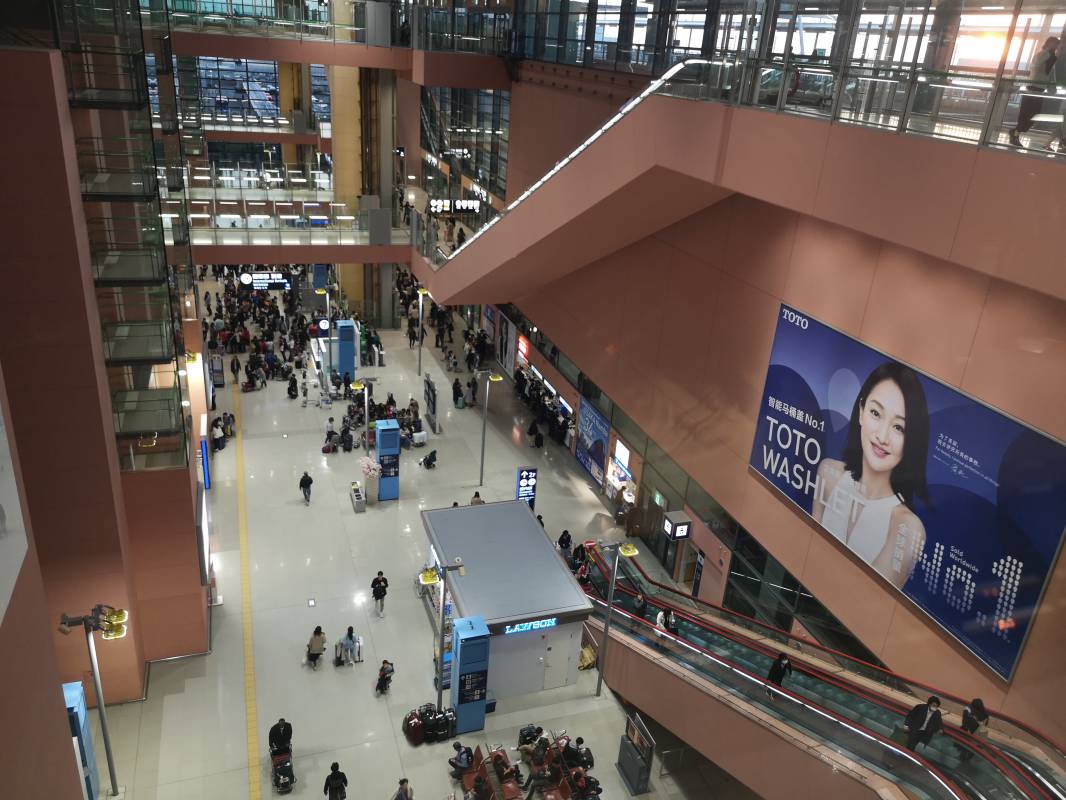 Inside Kansai airport
Inside Kansai airport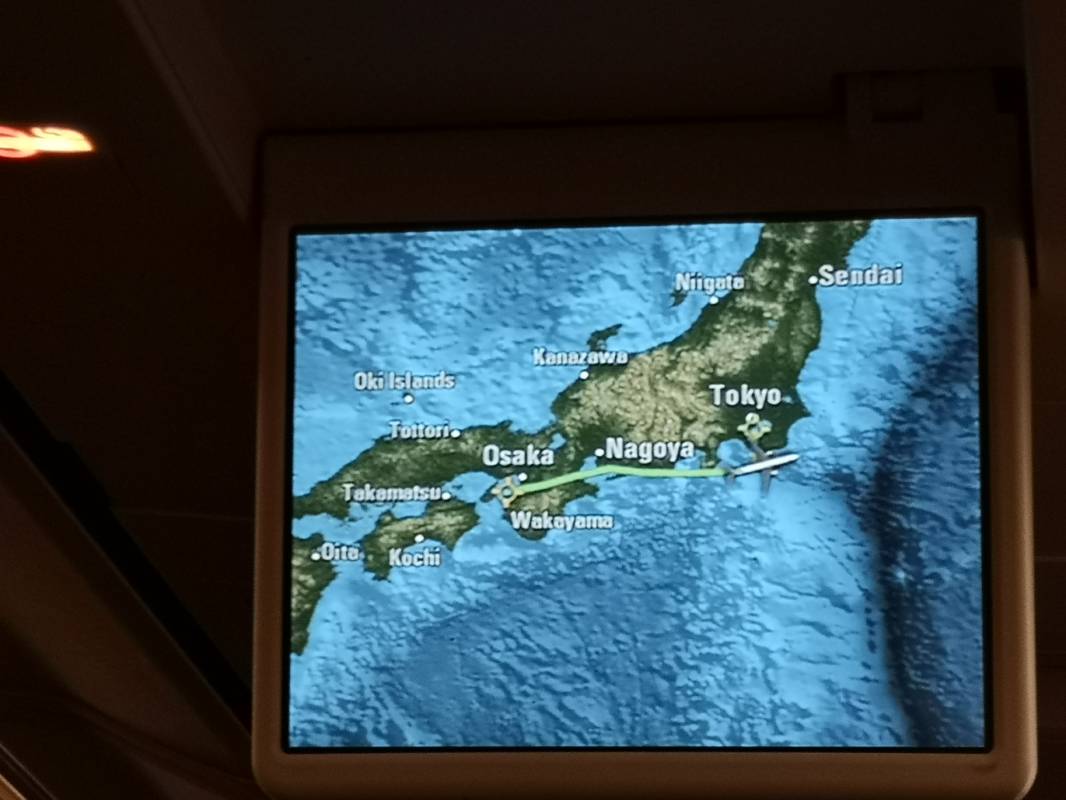 Flight path Kansai to Haneda
Flight path Kansai to Haneda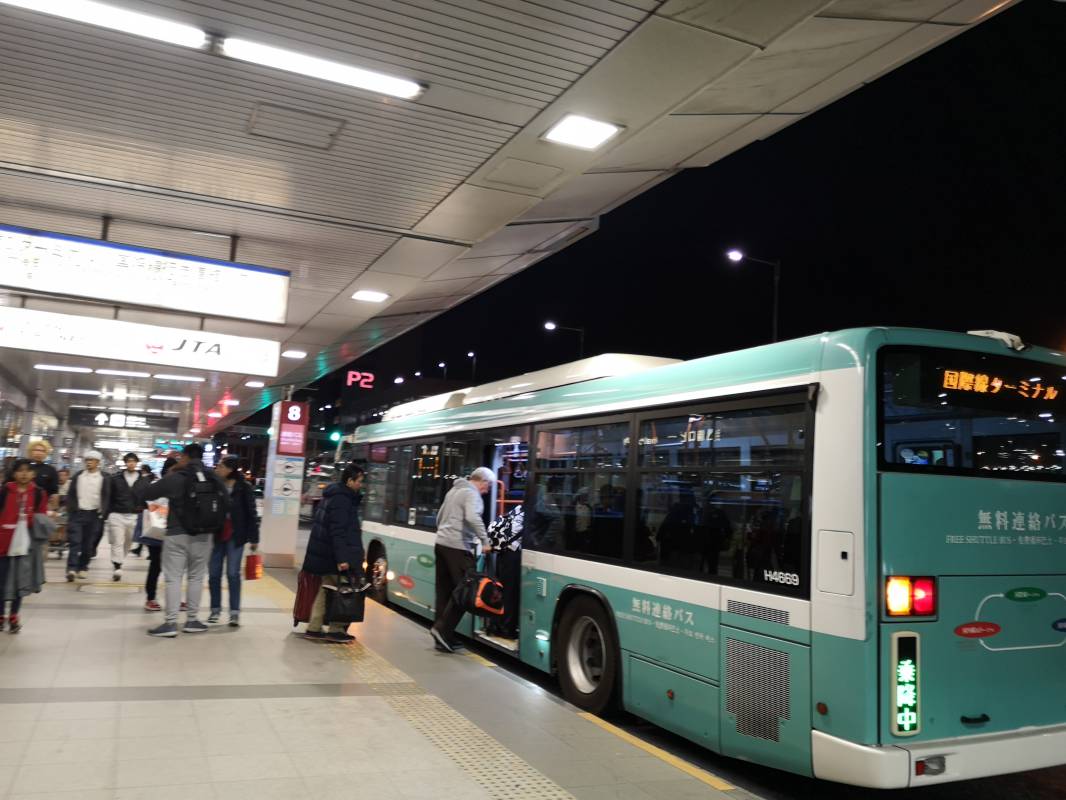 Change terminal in Haneda
Change terminal in Haneda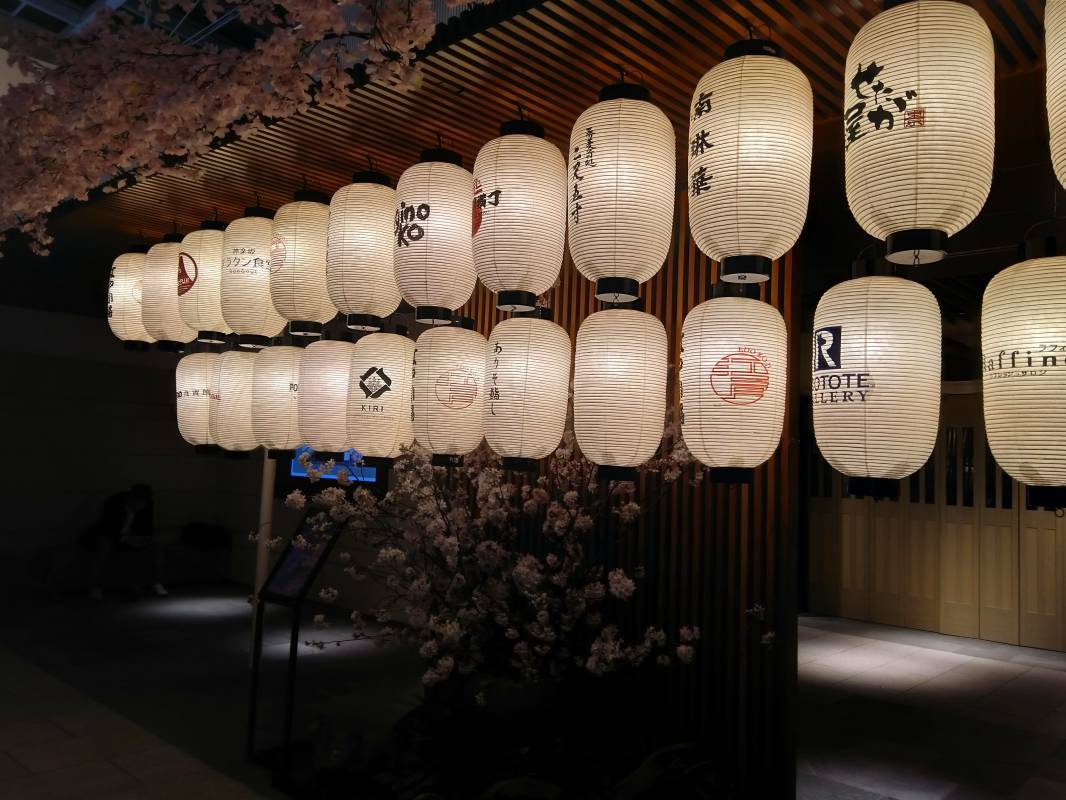 Haneda Airport restaurant area
Haneda Airport restaurant area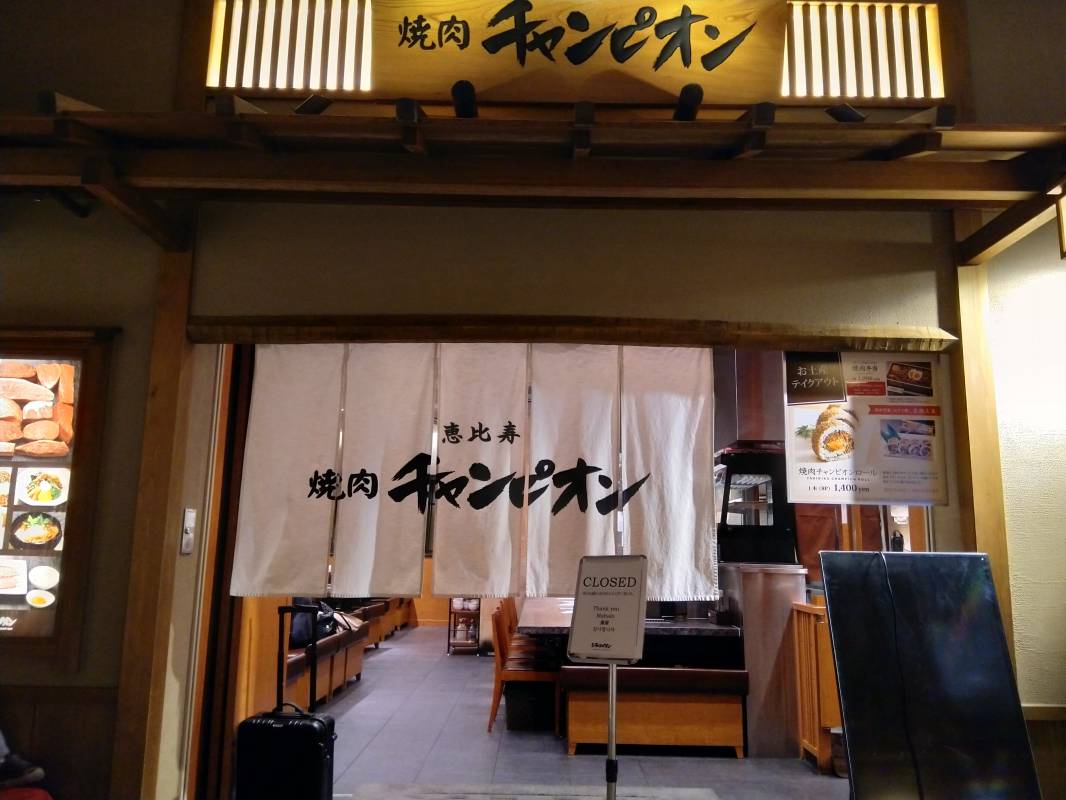 Found one restaurant open at midnight
Found one restaurant open at midnight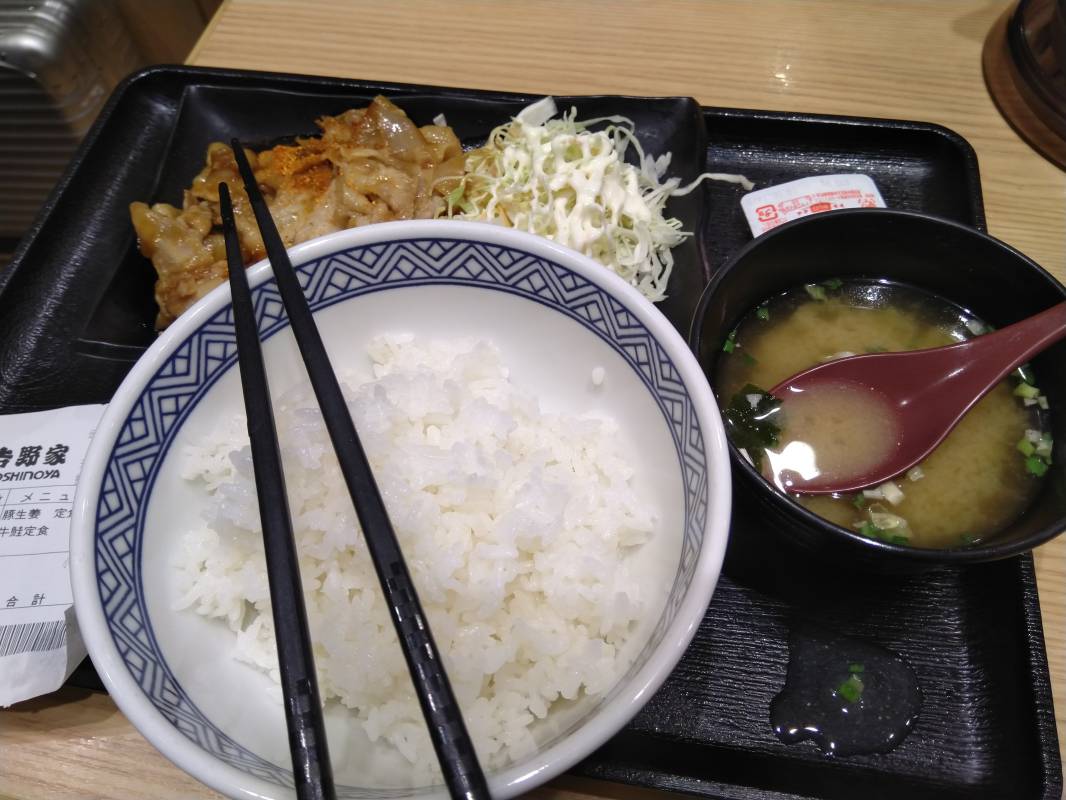 Last supper before departure to Manila
Last supper before departure to ManilaHistory
In the 1960s, when the Kansai region was rapidly losing trade to Tokyo, planners proposed a new airport near Kobe and Osaka. The city's original international airport, Itami Airport, located in the densely populated suburbs of Itami and Toyonaka, was surrounded by buildings; it could not be expanded, and many of its neighbours had filed complaints because of noise pollution problems.
After the protests surrounding New Tokyo International Airport (now Narita International Airport), which was built with expropriated land in a rural part of Chiba Prefecture, planners decided to build the airport offshore. The new airport was part of a number of new developments to revitalize Osaka, which had been losing economic and cultural ground to Tokyo for most of the century.
Initially, the airport was planned to be built near Kobe, but the city of Kobe refused the plan, so the airport was moved to a more southerly location on Osaka Bay. There it could be open 24 hours per day, unlike its predecessor in the city.Construction
An artificial island, 4 km (2.5 mi) long and 2.5 km (1.6 mi) wide, was proposed. Engineers needed to overcome the extremely high risks of earthquakes and typhoons (with storm surges of up to 3 m, 10 ft). The water depth is 18 m on top of 20 m of soft Holocene clay which holds 70% water. A million sand drains were built into the clay to remove water and solidify the clay.
Construction started in 1987. The sea wall was finished in 1989 (made of rock and 48,000 tetrapods). Three mountains were excavated for 21 million m3 (27 million cu yd), and 180 million m3 (240 million cu yd) was used to construct island 1. 10,000 workers and 10 million work hours over three years, using eighty ships, were needed to complete the 30-metre (98 ft) (or 40 m) layer of earth over the sea floor and inside the sea wall. In 1990, a three kilometer bridge was completed to connect the island to the mainland at Rinku Town, at a cost of $1 billion. Completion of the artificial island increased the area of Osaka Prefecture just enough that it is no longer the smallest prefecture in Japan (Kagawa Prefecture is now the smallest)
The island had been predicted to sink 5.7 m (19 ft) by the most optimistic estimate as the weight of the material used for construction compressed the seabed silts. However, by 1999, the island had sunk 8.2 m (27 ft) – much more than predicted. The project became the most expensive civil works project in modern history after twenty years of planning, three years of construction and fifteen billion (US) dollars of investment. Much of what was learned went into the successful artificial islands in silt deposits for New Kitakyushu Airport, Kobe Airport, and Chūbu Centrair International Airport. The lessons of Kansai Airport were also applied in the construction of Hong Kong International Airport.
In 1991, the terminal construction commenced. To compensate for the sinking of the island, adjustable columns were designed to support the terminal building. These are extended by inserting thick metal plates at their bases. Government officials proposed reducing the length of the terminal to cut costs, but architect Renzo Piano insisted on keeping the terminal at its full planned length. The airport was opened on 4 September 1994.
On 17 January 1995, Japan was struck by the Kobe earthquake, the epicenter of which was about 20 km (12 mi) away from KIX and killed 6,434 people on Japan's main island of Honshū. Due to its earthquake engineering, the airport emerged unscathed, mostly due to the use of sliding joints. Even the glass in the windows remained intact. In 1998, the airport survived a typhoon with wind speeds of up to 200 km/h (120 mph)





































Comments powered by CComment